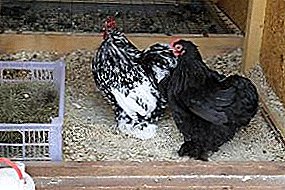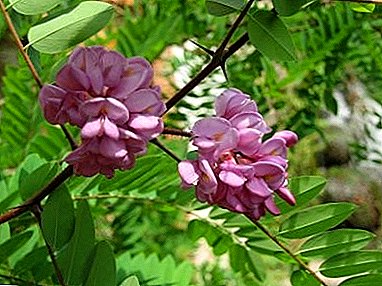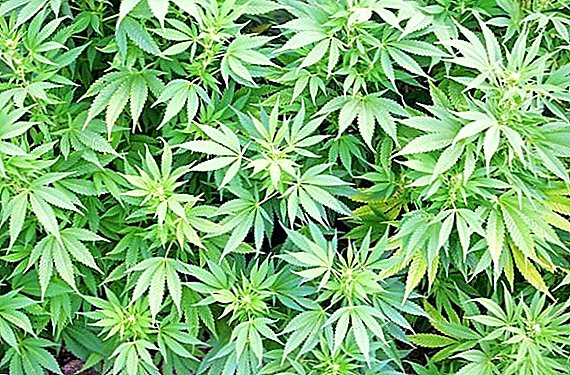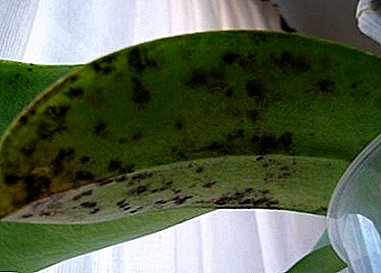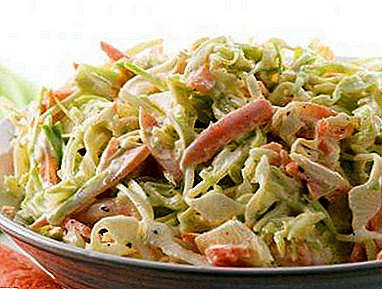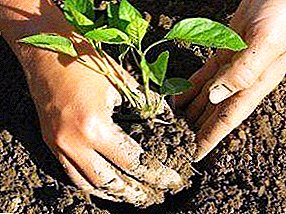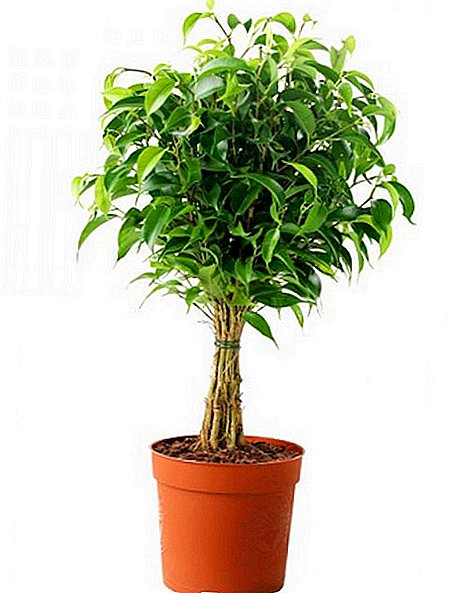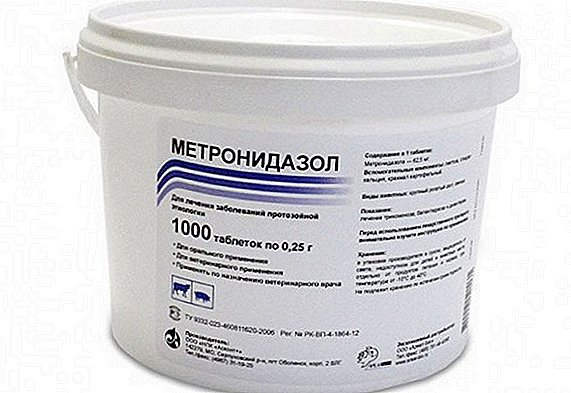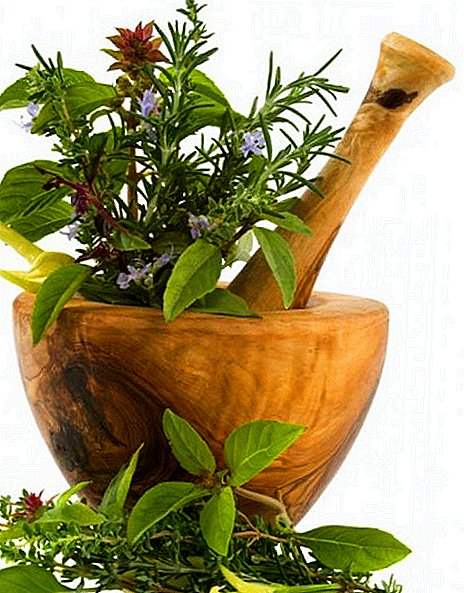 It is amazing how rich the nature of our latitudes is with wild herbs. Medicinal plants are widely settled in the fields and meadows, in the steppes and forests, on the mountain slopes and in the valleys. Many of them are well known to almost everyone; others are not so popular, but they are also widely used in folk and official medicine. Below we consider some wild herbs, their purpose and use by humans.
It is amazing how rich the nature of our latitudes is with wild herbs. Medicinal plants are widely settled in the fields and meadows, in the steppes and forests, on the mountain slopes and in the valleys. Many of them are well known to almost everyone; others are not so popular, but they are also widely used in folk and official medicine. Below we consider some wild herbs, their purpose and use by humans.
What are the herbs: classification
Wild herbs are divided into several typologies:
- for life expectancy
- to destination
- by distribution.
Now we will consider each classification separately.
By life expectancy
According to the life span, wild grasses are divided into annual, biennial and perennial.
Here are examples of some of them:
- annuals - buttercup, cornflower, ageratum, palmweed, dope, poppy, chamomile, and many others;
- biennials - mallow, euphorbia, tributaries, lupins, forget-me-nots, bells and others;
- perennials - nettle, St. John's wort, cowberry, oregano, field mint, celandine, burdock, chicory, dandelion and so on.

Did you know? The most common living things on planet Earth are plants. There are more than 370 thousand species.
To destination
Herbs are also classified by their use by humans. They are divided into spicy and medicinal. Already from the names of these categories it is clear what they are intended for and how they are used.
By distribution
Places where wild grasses grow allow you to divide them into those that grow in forests, in the steppes and in the desert, in swamps and in mountains, in meadows, in gardens and vegetable gardens.
Photos, names, benefits of wild herbs
There are a huge variety of wild plants, and almost every one of them can be found in the corresponding catalog or encyclopedia, with descriptions and photos.  We will also tell you about some herbs that are common in our territory, presenting their photos, a brief description and a positive impact on human health.
We will also tell you about some herbs that are common in our territory, presenting their photos, a brief description and a positive impact on human health.
Did you know? A substitute of coffee is made from the toasted roots of a dandelion, and the young leaves in the cookery of some nations are fermented or pickled like cabbage. In addition, in England has long been made wine from dandelion flowers.
Dandelion
Medicinal Dandelion (Taraxacum Officinale in Latin) has unique healing properties. It is rich in vitamins A and C, it also contains iron and calcium, it is a good detoxifier. The roots and leaves are rich in bitter glycosides, acids, oils, choline, asparagine.  Dandelion is recognized as a plant that can have this effect:
Dandelion is recognized as a plant that can have this effect:
- choleretic
- antipyretic
- laxative,
- expectorant
- soothing
- antispasmodic,
- easy sleeping pills.
Experimental chemical and pharmacological studies have proven that raw materials from dandelion have anti-tuberculosis, antiviral, fungicidal, anthelmintic, anti-carcinogenic and anti-diabetic properties.
Check out dandelion cooking recipes and learn how to make dandelion honey.
In cooking, dandelion also has a deserved distribution: boiled soup, cooked meatballs, cooked jam, and also fortified spring salads. Dandelions are excellent honey plants: honey collected from them turns out golden and fragrant, with a harsh aftertaste.
Video: dandelion useful properties
Hypericum
Hypericum perforatum (in Latin - Hypéricum perforátum) has beneficial ingredients that help a person maintain health. These are vitamin C, nicotinic acid, quercetin, rutin, carotene, sugars, saponins, hyperoside, tocopherol, phytoncides, essential oils, as well as bitter, tannic and resinous substances.
In pharmacology, St. John's wort is used to prepare a variety of drugs from it:
- antibacterial,
- antiseptic,
- painkillers
- wound healing
- antirheumatic,
- diuretics,
- choleretic,
- antihelminthic

Important! Hypericum has contraindications: it causes an increase in blood pressure, accelerates the elimination of antibiotics from organism incompatible with antidepressants. In women who take oral contraceptives, it can reduce their effect. And men need to remember - With long-term use, they may experience temporary impotence.
Recently, medical scientists conducted additional studies, during which it was found that St. John's wort has an antidepressant effect, which has no side effects. Also, this herb is valuable because it is recommended by cosmetologists as an anti-aging, tonic, anti-seboric remedy.
It has long been healers with the help of Hypericum healed:
- gynecological inflammations
- hemorrhoids,
- headaches,
- diseases of the liver and urinary system.
Chicory
Chicory (in Latin - Cichórium) has a rich chemical composition, thereby normalizing the functioning of many body systems.
This plant can:
- stimulate increased immunity
- heal wounds and eczema,
- have an antitumor effect,
- tone up the body
- relieve fatigue
- clean the vessels.
Chicory also has detoxic properties: it is able to normalize metabolic processes and eliminate toxins. Using chicory, you can clear the kidneys and improve the composition of the blood, accelerate peristalsis, eliminate heartburn, increase appetite. Drinks from it can replace coffee.  Also chicory is used as an anti-inflammatory, antipyretic and antibacterial agent for colds. Diabetics, using this healing herb, can also alleviate their condition.
Also chicory is used as an anti-inflammatory, antipyretic and antibacterial agent for colds. Diabetics, using this healing herb, can also alleviate their condition.
Nettle
Nettle stinging (in Latin - Urtica urens) and Stinging nettle (Urtica dioica) are two types of medicinal herbs that are used in official and in traditional medicine.
Nettle has won its popularity due to such properties:
- diuretic,
As a diuretic, they also use juniper, pumpkin, red clover, turmeric, field larkspur, avran, red onion, iglitsa, fennel, Phrygian cornflower, birch, cowberry leaves, agave.
- laxative,
- expectorant
- anticonvulsant,
- anti-inflammatory,
- antiseptic,
- pain reliever
- wound healing
- blood cleaning,
- hemostatic
 Pregnant and lactating women use nettle to improve lactation and normalize the level of iron in the blood. Its antidiabetic effect has also been proven.
Pregnant and lactating women use nettle to improve lactation and normalize the level of iron in the blood. Its antidiabetic effect has also been proven.Traditional medicine uses nettles for:
- dysentery,
- cold
- constipation
- dropsy,
- diseases of the liver and bronchopulmonary system,
- hemorrhoids,
- rheumatism,
- gout
- boils,
- acne and lichen-free skin lesions.
Burdock
Burdock (in Latin - Аrctium) is widely used in both medicine; basically use its root. Burdock root system is the richest in polysaccharide inulin (about 45%), it contains tannic and essential oils, mucus, fatty substances, bitterness, resins, mineral salts, ascorbic acid, protein.
Burdock root is used as a diuretic, diaphoretic, analgesic and choleretic agent, it helps in the formation of pancreatic enzymes.
We advise you to read about what the benefits of juice, as well as the root and leaves of burdock.Also this plant has the following effects:
- laxative,
- antimicrobial,
- antiseptic,
- antiallergic,
- wound healing
- antidiabetic

Hogweed
Hogweed (in Latin - Heracléum) has long been known for its healing properties. It has furocoumarins, which have a bactericidal effect, therefore, anthelmintic preparations for animals are produced from it.
For a person, Hogweed products are effective for psoriasis. Sap plants treat ulcers and purulent wounds, asthma and epilepsy. An anesthetic medicine is prepared from the roots for hepatic inflammation, as well as for jaundice.
Hogweed is used in cooking, as well as it is a complete fodder crop, which is combined with others and produced from them silage for livestock.
Hogweed has trace elements, carbohydrates, proteins and vitamins, as well as tannins, chlorophyll, carotene, and essential oils. The flowers contain a lot of nectar, which the bees transform into excellent honey. 
Important! It is necessary to carefully treat parshevikom, because its juice, falling on open areas of the body, can cause severe allergic reactions and burns that go into huge blisters.
Oregano
Oregano, or oregano (in Latin - Oríganum vulgáre) contains flavonoids, phytoncides, bitters, tannins, essential oil, thanks to which preparations based on it serve as anti-inflammatory and choleretic agents. Oregano treat whooping cough and bronchitis, it is taken as a sedative and painkiller.
Medicines from this herb:
- increase appetite
- improve intestinal peristalsis,
- produce a diuretic effect,
- facilitate epileptic seizures,
- relieve cramps
- normalize the menstrual cycle.
Field mint
Mint field or meadow (in Latin - Mentha arvēnsis) contains menthol, which has light anesthetic properties. It is also an ingredient in medicines for blood vessels and the heart: Validol, Valocordin, Zelenin drops and others.
The beneficial properties of mint are very versatile:
- mint can increase intestinal motility, contributing to its timely emptying, limiting putrefactive processes and fermentation;
- from the dried leaves prepare infusions that are used for disorders of the nervous system and insomnia;
- peppermint helps relieve nausea, produces a choleretic effect, eliminates diarrhea;
To remove bile from the body, such plants as aromatic plectrantus, belogarovnik, oxalis, golden brown, calendula and mountain arnica are also used.
- alcohol tincture and oil solution is used to reduce swelling and pain during inflammation of the respiratory system;
- The antimicrobial and suppressive properties of the essential oil are used to produce toothpastes and powders, as well as tinctures for rinsing the mouth.

Important! Do not use mint for children up to three years. Also, do not take a great interest in men of childbearing age, because it can reduce libido, and in women who have problems with conception, since this herb can aggravate the problem of infertility.
Tansy
Common tansy (in Latin - Tanacetum vulgare) is known for having a powerful anthelmintic effect. Also, it is used to prepare a powder in the form of an insecticide against insect pests. Tansy contains alkaloids, essential oils, flavonoids, tannins.
This plant is used in hepatitis to reduce the production of mucus that accumulates in the bile. The herb has a positive effect on the muscle tone of the stomach and intestines, enhancing the secretion. 
Infusion of basket inflorescences can:
- increase the amplitude of contractions of the heart,
- eliminate hypotension
- heal stomach ulcers and duodenal ulcers.
Traditional medicine uses tansy in the treatment of:
- enterobiosis,
- hypoacid gastritis,
- hepatitis A,
- colitis,
- ascariasis
- cholecystitis.
Video: beneficial properties of tansy
Plantain
Plantain (in Latin - Plantаgo). In medicine, plantain of two types is used: flea and Indian. The composition of these herbs contains a lot of ascorbic acid, phytoncids and carotene.
Alcoholic and aqueous foliage extracts of plantain treat severe forms of gastric and duodenal ulcers. Sokom treat gastritis and enteritis, it is drunk for better digestion of food. Special studies of phytochemists have shown that plantain leaves contain elements that affect cholesterol metabolism.
Infusion of the leaves is used for sputum discharge in the case of:
- bronchitis,
- pulmonary tuberculosis,
- bronchial asthma,
- pleurisy,
- catarrh of the upper respiratory tract,
- whooping cough.

Plantain is known as an antiseptic, because it can:
- reduce inflammation
- tighten wounds
- to numb
- purify the blood.
Sagebrush
Bitter wormwood (in Latin - Artemísia absínthium) is used in gastroenterology. Its benefit is due to active ingredients such as absinthine, anabsintin, flavonoids, thujone, pinene, cadinene, bisabolone, hamazulenogen, selenen.
The leaves of wormwood are rich in phytoncides, alkaloids, capillin, ascorbic acid, provitamin A, malic and succinic acids, carotene and saponins. 
- The presence of galenic substances stimulates the reflex function of the pancreas, improves the functioning of the gallbladder.
- Terpenes relieve inflammation and are pacemakers.
- The essential oil released from the plant has a stimulating effect on the central nervous system.
- Saturated hydrocarbons in the grass have a bactericidal and fungicidal effect.
- Bitterness, which is also present, can whet the appetite and normalize digestion.
Traditional medicine considers wormwood an excellent remedy for:
- insomnia,
- ascariasis,
- flatulence,
- obesity
- migraine,
- enterocolitis
- gastritis,
- diseases of the kidneys and liver.
In combination with other herbs wormwood is successfully used for:
- pulmonary tuberculosis,
- hypertension
- fever
- swelling,
- hemorrhoids.
Horsetail
Horsetail (Equisetum arvénse in Latin) is rich in flavonoids derived from apigenin, quercetin, luteolin, silicic acid, and tannins.
There are also oxalic, aconitic, linoleic, malic and ascorbic acids, fatty oils, alkaloids, calcium, carotene, iron, potassium, magnesium, copper and other substances.  Thanks to the listed components, horsetail has the following properties:
Thanks to the listed components, horsetail has the following properties:
- cleansing,
- anti-inflammatory,
- antimicrobial,
- anthelmintic,
- diuretics,
- antiseptic,
- detoxification.
In medicine and cosmetology, horsetail is used as an infusion, lotion and decoction. It is used in compliance with fasting diets in the process of losing weight. Cooks use young horsetail shoots, boiling or roasting them and adding to omelets and casseroles, as well as filling for pancakes and pies.
Video: useful properties of horsetail
Quinoa
Quinoa (Latin - Atriplex) is useful in the treatment of rheumatism, allows you to relieve emotional stress. Due to the large amount of rutin and potassium, it is used in cardiology and in atherosclerotic changes in the vessels.
Did you know? Since olden times, quinoa was used as food during war or crop failure: rye flour with milled quinoa seeds was used in bread making. Such bread, although it was not attractive in appearance and taste, still helped people survive in times of hunger.
Treatments from it are treated:
- chronic and acute diseases of the lower respiratory tract,
- stomach diseases,
- skin diseases
- sore wounds.

The plant also serves as:
- anti-inflammatory,
- wound healing
- cleansing,
- diuretic,
- expectorant
- choleretic
- sedative.
Vegetarians rated the quinoa according to their merits, because there is a lot of protein in it: soup from it, as well as cutlets, soups, mashed potatoes and bread make it possible to stay full for a long time.
Expectorant properties also possess such plants as savory, ivy-shaped budra, blue cyanosis, silver-colored loch, bitter wormwood, elecampane, bruise and heather.
Video: the beneficial properties of quinoa
Celandine
Celandine (in Latin - Chelidonium) has many useful components: it contains up to twenty poisonous substances that destroy pathogenic bacteria, viruses, fungi, protozoa.
Useful action celandine:
- helps with cramps
- relieves inflammation,
- can numb and soothe
- has antitumor and bactericidal effect,
- serves as a diuretic
- heals wounds
- increases lactation in lactating women
- drugs from celandine carry out cleaning of the lymph from infections.
 When using small doses of celandine:
When using small doses of celandine:- reduced blood pressure;
- heart activity slows down;
- neuroses, convulsions, paralysis, epilepsy;
- the pancreas is working.
When using celandine in the treatment it is important to remember that you can not independently exceed the dose of the prescribed amount of the drug, otherwise it will lead to dangerous side effects.
Important! It is necessary to start taking this herb with a minimum dose, gradually increasing it to the desired one.Video: useful properties of celandine The medicinal plants listed here have been known for a long time. They were appreciated and learned to use even by our ancestors, and then these skills were passed on to descendants, from healer to healer. And now we can consider ourselves happy owners of this valuable knowledge.


